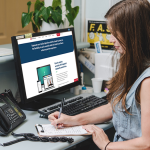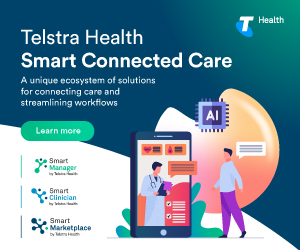5 Tips for healthcare data security success in 2018
As digital transformation of the healthcare framework increasingly becomes a part of our everyday lives, data security remains one of the most critical concerns for healthcare providers in Australia. In this article, we take a look at what it takes to ensure better data security success in 2018.
1. Prioritise healthcare cloud security
More than ever before, healthcare organisations are taking advantage of the new, compliance-ready, secure cloud environments to extend and distribute their healthcare ecosystem.
This because cloud-based healthcare technology has evolved leaps and bounds, meaning healthcare providers are able to control the ebb and flow of sensitive data across multiple devices using one, robust software solution.
Cloud-based secure systems also allow you to dynamically manage your workloads to ensure secure data resides at the appropriate point.
On top of this, two of the most significant value adds of cloud technologies are analytics and the ability to access data in real-time. To make data work harder for industry, we need to focus on the interoperability and the flow of information through a more robust system, generating greater efficiencies and strengthening data security
2. Leverage security virtualisation to combat data loss
Healthcare providers now have more options when it comes to adopting virtual appliances capable cutting edge security capabilities including firewall and advanced security services, data loss prevention and IPS/IDS.
Meanwhile new VM-based security solutions allow you to monitor internal traffic and integrate with APIs to let you proactively manage VM changes dynamically.
3. Update all healthcare applications
Having the latest healthcare applications are absolutely critical when it comes to combatting security breaches, and prudent healthcare providers and practice managers need to ensure all software systems are updated regularly. For more complex updates, you will need to speak to your software solution provider to ensure all updates are carried out on time and seamlessly, while ensuring all sensitive data is protected.
4. Monitor and manage data access
New tools around application firewalls and application-centric security are now allowing healthcare providers to have greater control over data security. At the same time, new security tools can allow you to monitor who is actually accessing the data, what kind of data is being accessed and from where. This is particularly crucial in the age of cloud-based mobility and IoT application access.
5. Give your security framework a health check
In the age of ransomware, government data breaches and bolder, more nimble attackers, there’s no room for data management complacency in healthcare.
In order to ensure sensitive data remains protected, it’s critical to constantly stay proactive with your security framework, tools and policies. Periodically test out your own systems and ensure your security architecture is evolving at the same pace as digital healthcare demands.
Moving forward, industry must invest in better data security infrastructure to enable sector transformation. Ultimately, collaboration within more robust, better protected health ‘ecosystems’ can deliver rich insights which will benefit the quality of care.









